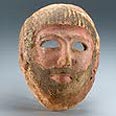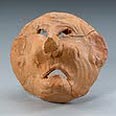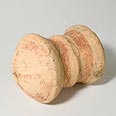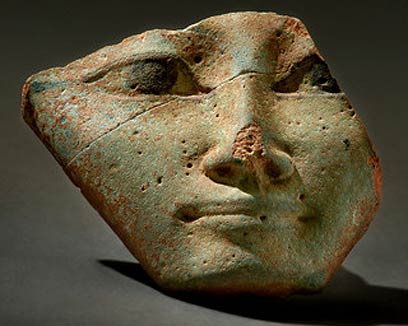


Appearing in the exhibition are various masks that portray humans and animals, the oldest of which is from the Stone Age and dates to c. 6500 BCE.
A mask may change a person’s identity, his age and gender, social status and everyday appearance. Many ceremonial masks were used for ritual purposes such as rainmaking, curing disease and exorcising spirits and demons. Oftentimes such masks were in the image of deities or demons.
The use of rattles during the reading of the scroll is a symbolic expression of the extermination of the Amalekites, the first people whom the Israelites fought when they were wandering in the desert (Exodus 17:8-13). According to tradition, Haman was a descendant of the Amalekites.

Image of a person, from Solomon’s Pillars (Photo: Leonid Padrol, courtesy of Israel Antiquities Authority)
Clay rattles that contain small stones or other materials for making noise were found in archaeological excavations in the country. The rattles occur in a variety of shapes, some are adorned with a painted or engraved decoration, but all of them produce the same noise that is characteristic of a rattle.
Most of the rattles were found in a cultic context or inside tombs and therefore there are those who believe that they were primarily used for ritual purposes. The frequency with which rattles occur in excavations throughout the country is explained by the fact that they are small objects that were relatively easy to manufacture and were used by the general population.
There is the assertion that the clay rattle was an important musical instrument in the religious practices of the Kingdom of Israel and the Kingdom of Judah during the First Temple period.















